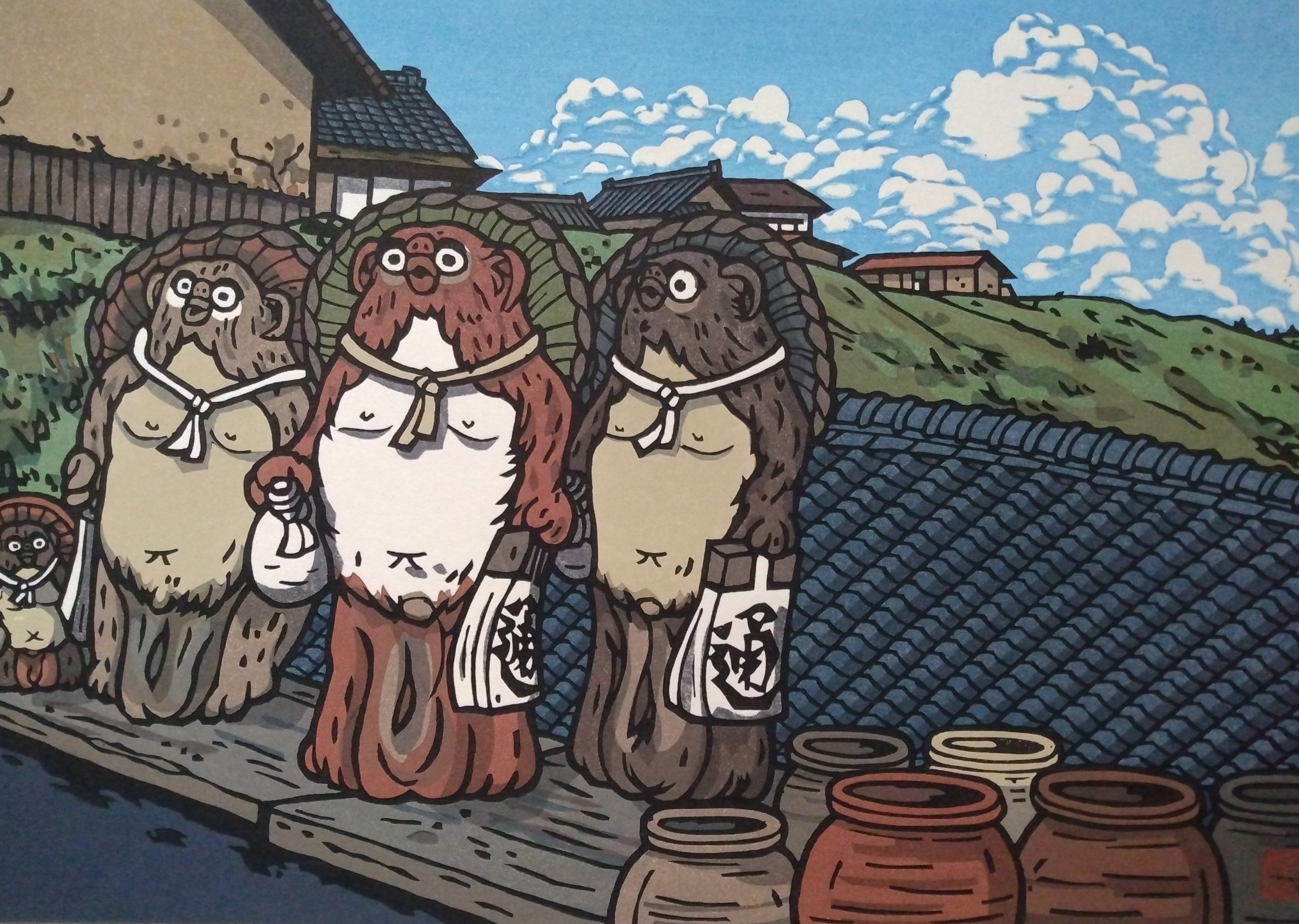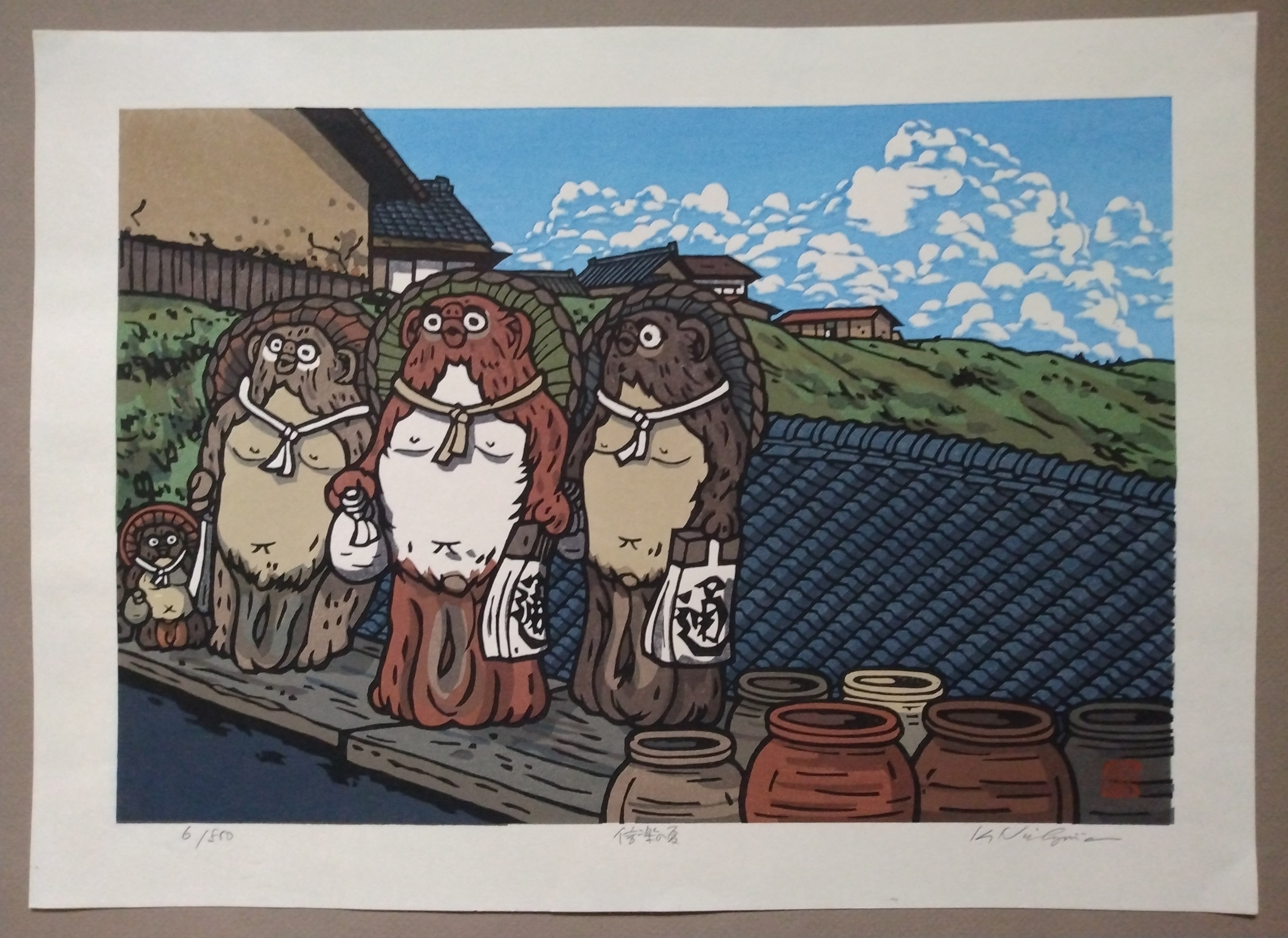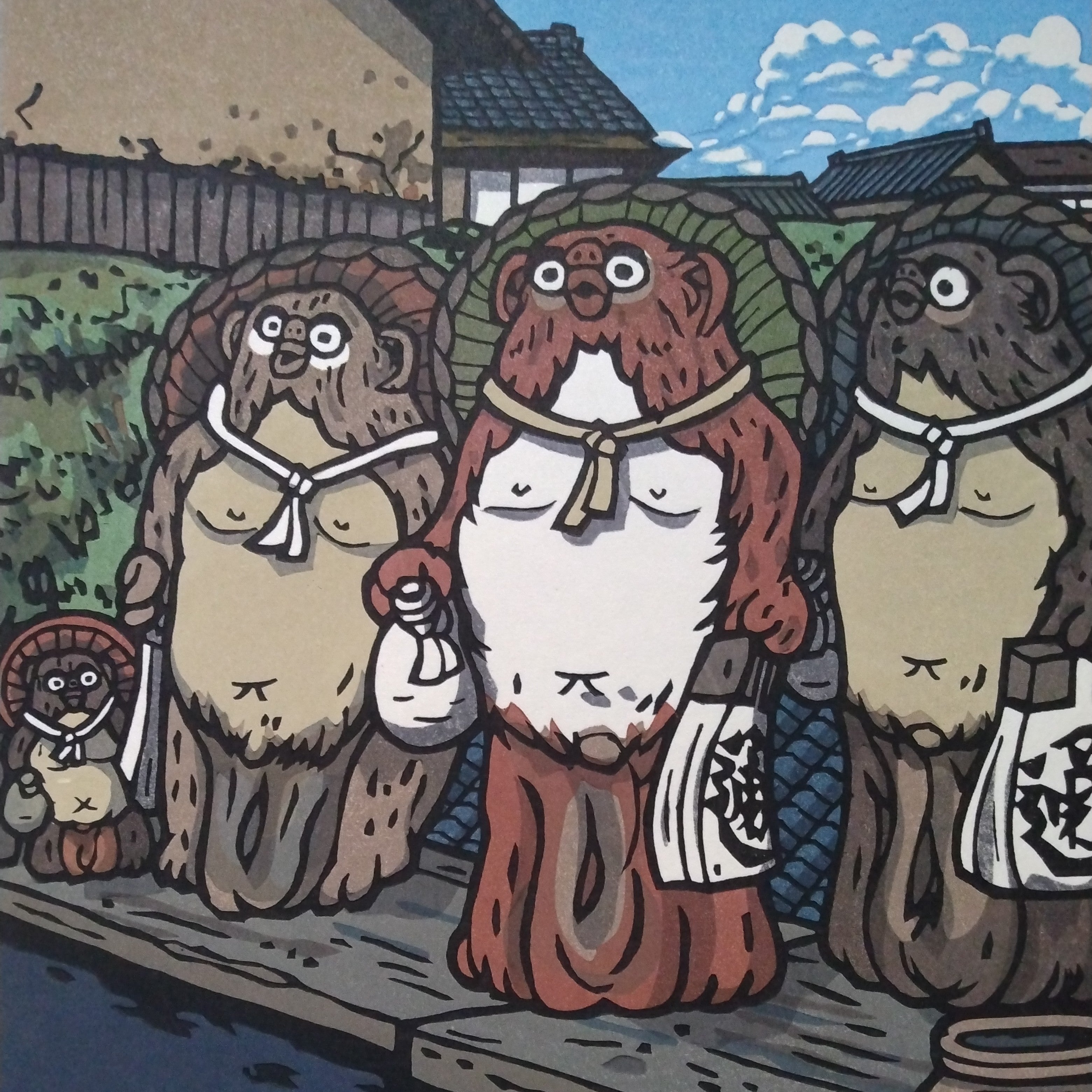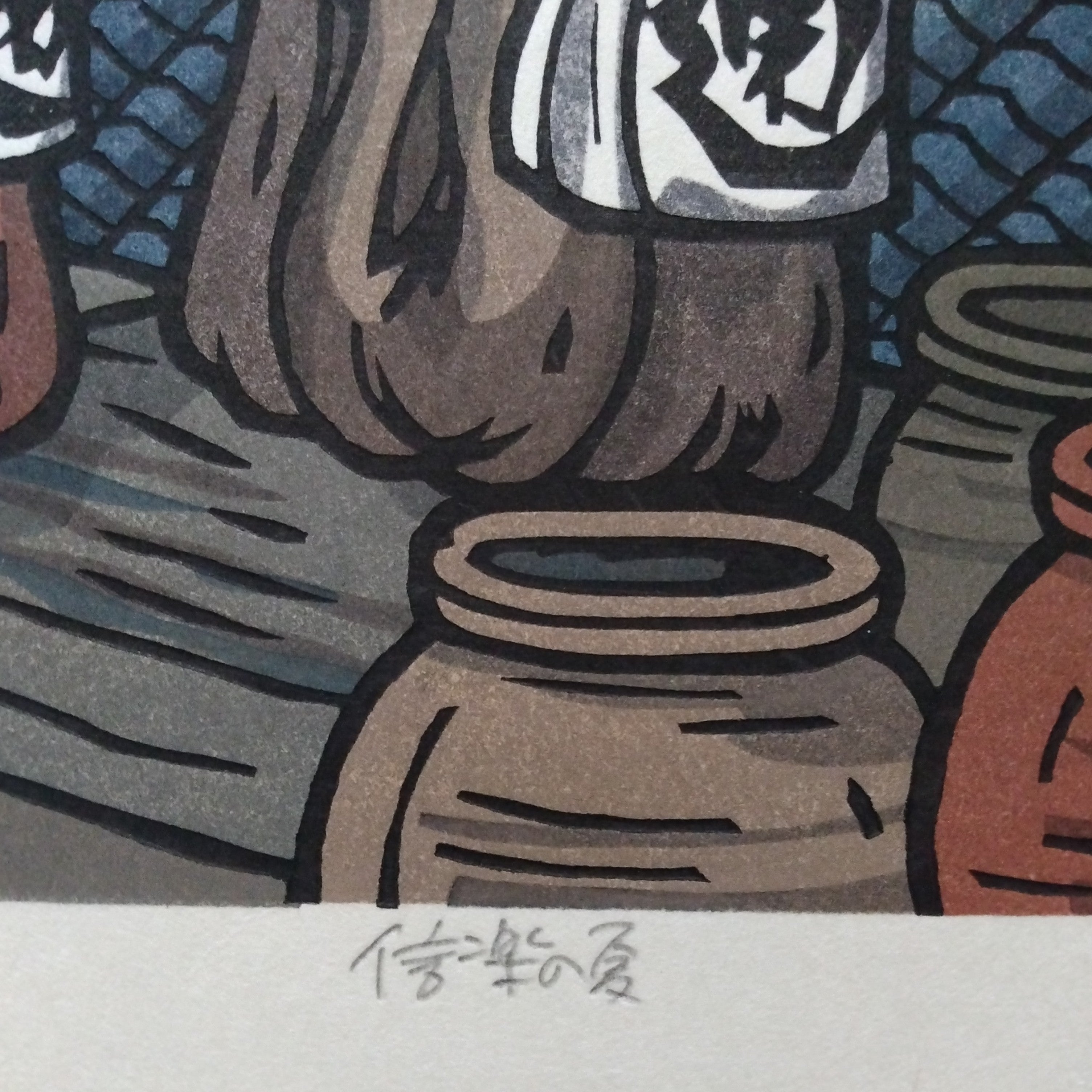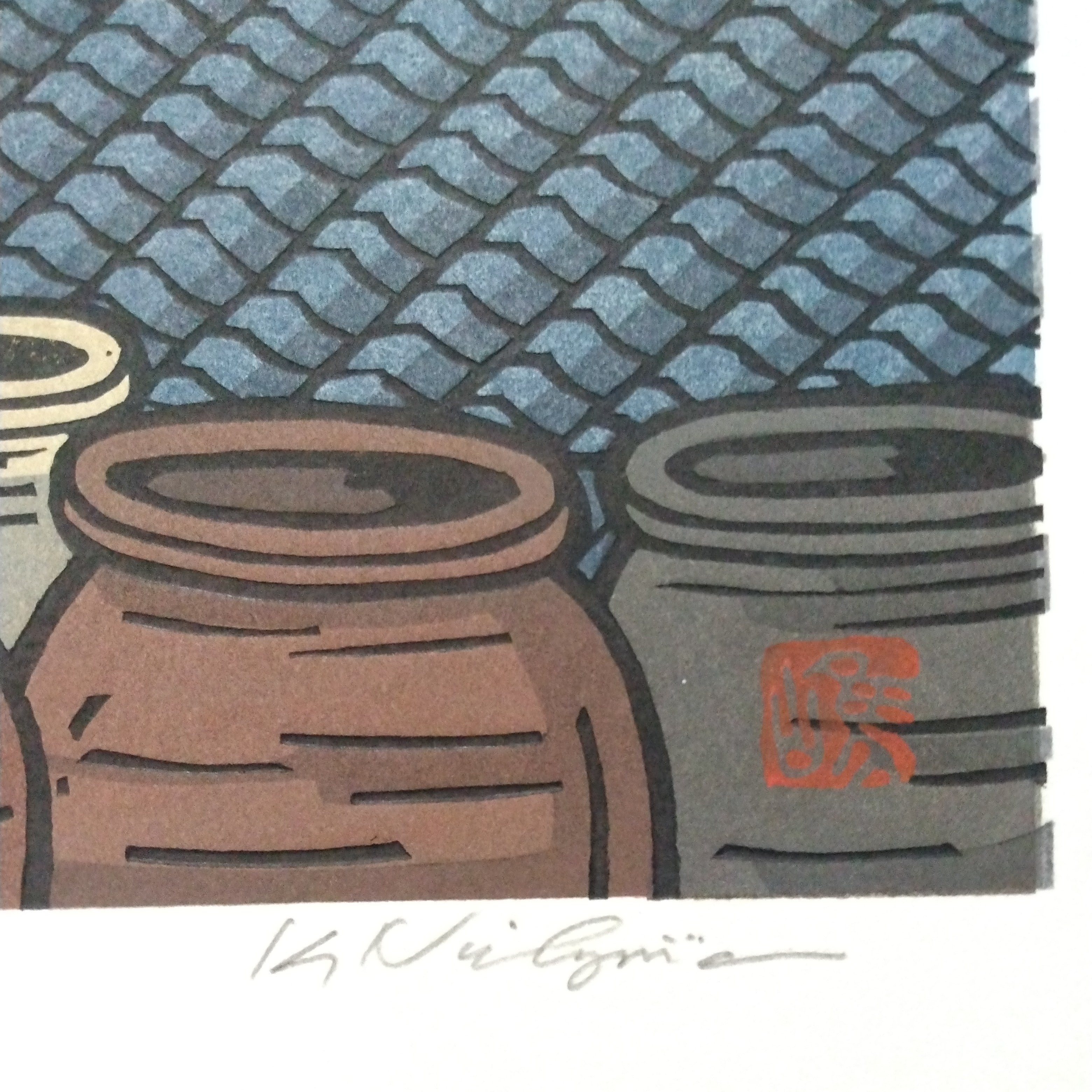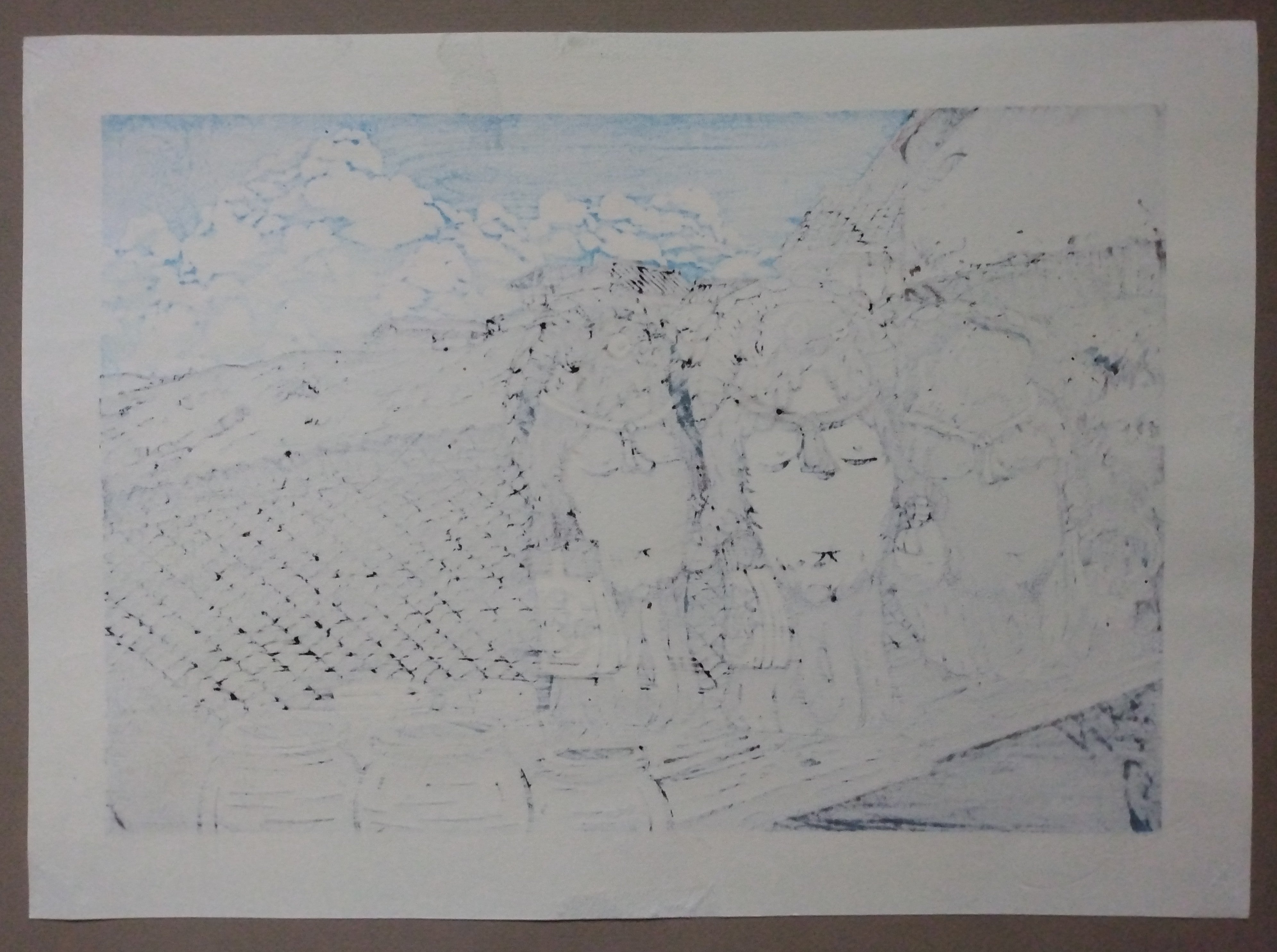Description
Woodblock Print by Katsuyuki Nishijima, "Shigaraki in Summer" (Shigaraki no Natsu). Limited edition print, #6 of 500 (first 1.2% of print run). Features artist's signature and red seal. ca. 1980's. Horizontal format; H. 10"(25.5cm) X W. 14.75"(37.5cm). Excellent condition. *Fully matted, framed, & delivered option may be available for local purchasers (I-5 corridor from Seattle to Blaine, WA). Please contact for details.
The image is of standing ceramic Tanuki (Racoon Dogs) in the pottery village of Shigaraki, in the mountains of Shiga Prefecture about 25 miles (~40km) east of Kyoto. Shigaraki is considered one of the six ancient pottery kiln sites in Japan, with a history going back to the 13th Century. Although Shigaraki wares have been used for tea and utilitarian purposes in the ancient capital and throughout Japan for several hundred years, a modern-day product for which they are now famous is the Tanuki statue. From diminutive souvenir-size Tanuki to giant examples as tall as houses, Tanuki are so ubiquitous in Shigaraki that the town is often called "Tanuki Village."
Katsuyuki Nishijima, 1945 – present.
Katsuyuki Nishijima was born in Yamaguchi Prefecture at the southwest end of the main island of Honshu. At the age of 19, he started studying the art of woodblock printing making at the Mikumo Publishing Company in Kyoto. By the early 1970’s, he was beginning his career as a Sosaku Hanga (Creative Print) artist. As opposed to traditional woodblock prints of the 19th Century and earlier that were created by a team of artisans composed of designers, carvers, colorists, printers, and publishers; the Sosaku Hanga movement of the 20th Century highlighted the work of artists who self-drew, self-carved, and self-printed their own expressive works. Nishijima is a very popular contemporary Kyoto print artist and his works have been collected and exhibited widely in Japan, the US, and Europe.
Nishijima’s works could be called “romantic” in that there is something idealized and old-fashioned about his images. They rarely contain people; or modern elements such as cars, telephone wires, or even the ubiquitous Japanese trains. They focus on architectural elements such as tiled and thatched rooftops, verandas, noren shop curtains, the wooden latticework in front of Kyoto machiya buildings, stone walls, as well as Japanese rural landscapes. While these could be considered romantic and detached from reality, these elements still exist in modern-day Japan and are what visitors are drawn to and remember in places like Kyoto, Shigaraki, Takayama, and the like. One could say that instead of romanticizing Japanese scenery, he’s actually bringing out the essence of what is beautiful and important in humanity’s view of traditional Japan.

